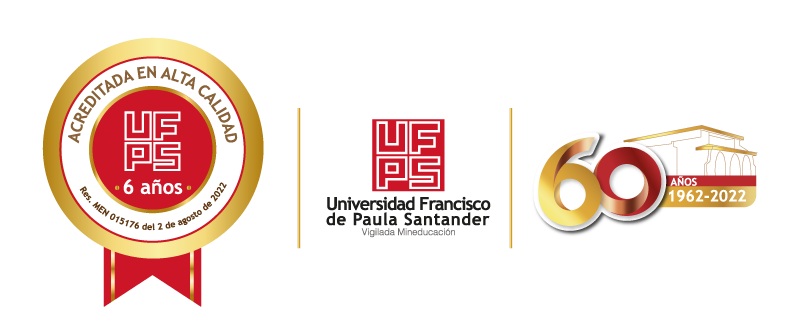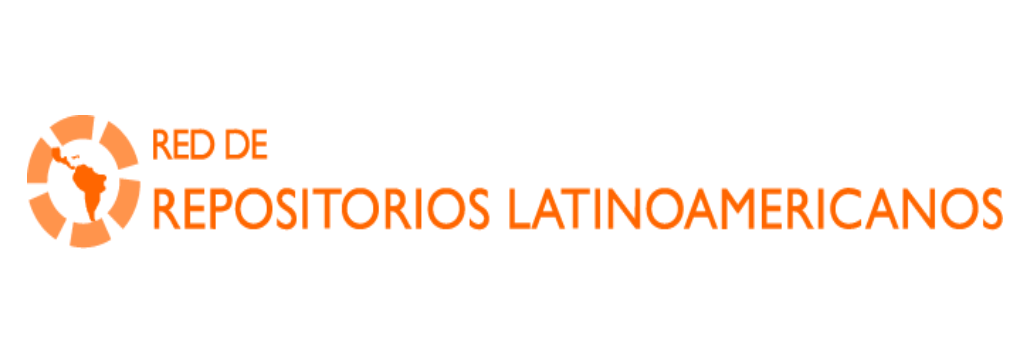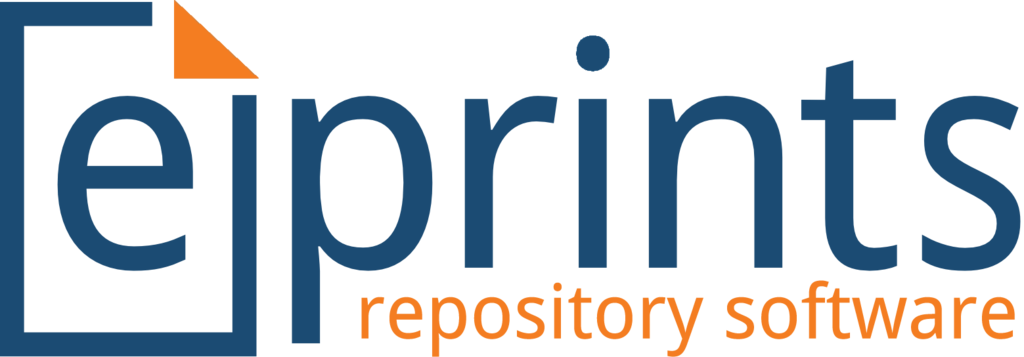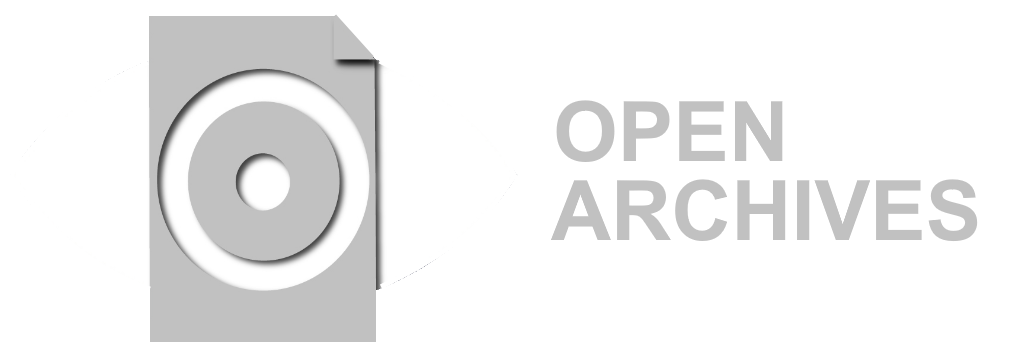| dc.contributor.advisor | Tarazona Anteliz, Julián Orlando | |
| dc.contributor.advisor | Herrera Cáceres, Matias | |
| dc.contributor.author | Marín Balseca, Adrián Alberto | |
| dc.date.accessioned | 2025-04-25T15:34:19Z | |
| dc.date.available | 2025-04-25T15:34:19Z | |
| dc.date.issued | 2024 | |
| dc.identifier.uri | https://repositorio.ufps.edu.co/handle/ufps/9428 | |
| dc.description.abstract | La detección de objetos y personas en imágenes es una tarea fundamental en el campo de la visión por computadora, y ha sido objeto de intenso estudio en los últimos años. Con la inteligencia artificial, esta tarea se ha vuelto aún más sofisticada y eficiente, gracias al desarrollo de algoritmos y modelos de aprendizaje profundo capaces de analizar y procesar grandes cantidades de datos, incluyendo imágenes. En el contexto de la detección de objetos y personas en imágenes, la inteligencia artificial ha dado lugar a una nueva disciplina conocida como "tratamiento de imágenes". Este proceso implica la aplicación de algoritmos y modelos de aprendizaje profundo a imágenes digitales para identificar, clasificar y rastrear objetos y personas. El tratamiento de imágenes para la detección de objetos y personas con inteligencia artificial es una técnica cada vez más relevante en diversas aplicaciones, como la seguridad, la vigilancia, el comercio electrónico, la automatización de fábricas, la conducción autónoma, y muchas otras. En el ámbito de la seguridad y la vigilancia, el tratamiento de imágenes con inteligencia artificial permite la detección de personas sospechosas, la identificación de objetos peligrosos, y el seguimiento de movimientos anómalos en áreas de alto riesgo. Según un estudio del IEEE, la aplicación de técnicas de aprendizaje profundo en el tratamiento de imágenes ha aumentado la precisión y la velocidad en la detección de objetos y personas, lo que ha mejorado la eficiencia y la eficacia en la vigilancia y la seguridad [1]. En el comercio electrónico, esta técnica facilita la búsqueda y el reconocimiento de productos, mejorando la experiencia del usuario y aumentando la eficiencia de los procesos de venta y compra. Según un estudio del IEEE, el uso de redes neuronales convolucionales (CNN) en el tratamiento de imágenes a 11 mejorado la precisión y la velocidad en la detección y clasificación de productos en el comercio electrónico. | spa |
| dc.description.tableofcontents | Tabla de Contenido
Introducción ............................................................................................................................. 10
1. Descripción Del Problema ................................................................................................ 12
1.1 Planteamiento Del Problema.......................................................................................... 13
1.2 Justificación.................................................................................................................... 14
1.2.1 Beneficios Tecnológicos......................................................................................... 16
1.2.2 Beneficios Sociales ................................................................................................. 17
1.2.3 Beneficios Económicos........................................................................................... 19
1.2.4 Beneficios Institucionales ....................................................................................... 20
1.3 Alcances......................................................................................................................... 21
1.3.1 Tipo Proyecto.......................................................................................................... 23
1.3.2 Resultados Esperados.............................................................................................. 25
1.3.3 Resultado Directos.................................................................................................. 26
1.3.4 Resultado Indirectos................................................................................................ 28
1.4 Limitaciones................................................................................................................... 30
1.5 Delimitaciones .......................................................................................................... 30
1.6 Delimitación De Tiempo........................................................................................... 31
1.7 Delimitación de espacio............................................................................................ 31
2. Objetivos.............................................................................................................................. 32
2.1 Objetivo General ............................................................................................................ 32
Pág
2.2 Objetivos Específicos..................................................................................................... 32
3. Marco Referencial................................................................................................................ 33
3.1 Antecedentes.................................................................................................................. 33
3.2 Tratamiento de imágenes ............................................................................................... 43
3.2.1 Redes Neuronales Convolucionales........................................................................ 44
3.2.2 Inteligencia Artificial .............................................................................................. 46
3.2.3 Software Libre......................................................................................................... 47
3.3 Marco Legal ................................................................................................................... 48
3.3.1 Uso De Los Servicios Ultralytics HUB .................................................................. 48
3.3.2 Gestión de Datos..................................................................................................... 49
4. Diseño Metodológico........................................................................................................... 50
4.1 Tipo De Metodología ..................................................................................................... 50
4.2 Realizar Un Tratamiento De Imágenes Para La Detección De Objetos Y Personas Con
Inteligencia Artificial Para El Laboratorio De Fabricación Digital.......................................... 50
4.3 Recopilar Información Acerca Del Tratamiento De Imágenes Para La Detección De
Objetos Y Personas Con Inteligencia Artificial........................................................................ 51
4.4 Desarrollar El Algoritmo Basado En Inteligencia Artificial Para La Detección De
Objetos Y Personas Usando Software Libre............................................................................. 52
4.5 Realizar Pruebas De Funcionamiento Y Desarrollar La Evaluación Del Sistema De
Detección De Objetos Y Personas Con El Algoritmo Basado En Inteligencia Artificial. ....... 53
4.6 Divulgar Ante La Comunidad Académica De La Universidad Francisco De Paula
Santander Los Resultados Obtenidos Con La Realización De Esta Pasantía........................... 53
4.7 Técnicas de Recolección de Datos............................................................................. 54
4.8 Técnicas De Análisis De La Información .................................................................. 55
5. Resultados............................................................................................................................ 58
5.1 Plataforma De Software ................................................................................................. 59
5.2 Selección Ide .................................................................................................................. 59
5.3 Selección De Lenguaje................................................................................................... 61
5.4 Selección Del Motor ...................................................................................................... 62
5.5 El Motor......................................................................................................................... 64
5.6 Plataforma De Hardware C++........................................................................................ 66
5.7 Requerimientos De La Estructura De Datos.................................................................. 68
5.7.1 Estructura De Los Datos Fuente ............................................................................. 69
5.8 Nivel De Abstracción..................................................................................................... 71
5.9 Procesamiento Y Adecuación De Los Datos Fuente ..................................................... 73
6. Conclusiones........................................................................................................................ 75
Eficiencia En La Detección.................................................................................................. 75
Mejora En La Seguridad ...................................................................................................... 75
Facilitación De La Automatización ..................................................................................... 75
Desarrollo De Nuevas Aplicaciones .................................................................................... 75
Desafíos Y Futuro ................................................................................................................ 76
7. Recomendaciones................................................................................................................. 76
REFERENCIAS....................................................................................................................... 81 | spa |
| dc.format.extent | 89 páginas. ilustraciones, (Trabajo completo) 4.977 KB | spa |
| dc.format.mimetype | application/pdf | spa |
| dc.language.iso | spa | spa |
| dc.publisher | Universidad Francisco de Paula Santander | spa |
| dc.rights | Derechos Reservados - Universidad Francisco de Paula Santander | eng |
| dc.source | https://catalogobiblioteca.ufps.edu.co/cgi-bin/koha/opac-detail.pl?biblionumber=61163 | spa |
| dc.title | Tratamiento de imágenes para la detección de objetos y personas con inteligencia artificial en el laboratorio de fabricación digital | spa |
| dc.type | Trabajo de grado - Pregrado | spa |
| dcterms.references | Z. Zhang, et al., "Deep learning for object detection in video surveillance: A review," IEEE Transactions on Circuits and Systems for Video Technology, vol. 28, no. 12, pp. 2813-2829, Dec. 2018 | spa |
| dcterms.references | H. Li, et al., "Deep learning for product search in e-commerce: A review," IEEE Transactions on Multimedia, vol. 21, no. 1, pp. 1-18, Jan. 2019 | spa |
| dcterms.references | Y. Zhang, et al., "Deep learning for quality inspection in manufacturing: A review," IEEE Transactions on Industrial Informatics, vol. 15, no. 2, pp. 1115-1125, Apr. 2019. | spa |
| dcterms.references | X. Liu, et al., "Deep learning for object detection in autonomous driving: A review," IEEE Transactions on Intelligent Transportation Systems, vol. 21, no. 4, pp. 1906-1919, Apr. 2020 | spa |
| dcterms.references | R. Jain and P. Kaur, "Object Detection and Tracking in Manufacturing using Deep Learning: A Survey," IEEE Access, vol. 9, pp. 48547-48570, 2021. | spa |
| dcterms.references | Deloitte, "AI in Manufacturing: The Next Frontier," 2020. [Online]. Available: https://www2.deloitte.com/content/dam/Deloitte/us/Documents/manufacturing/us-ai-inmanufacturing-the-next-frontier.pdf. | spa |
| dcterms.references | D. Tabernik, S. Šela, J. Skvarč and D. Skočaj, "Segmentation-based deep-learning approach for surface-defect detection," Journal of Intelligent Manufacturing, vol. 31, pp. 759–776, 2020. | spa |
| dcterms.references | International Labour Organization, "Safety and Health at Work," 2021. [Online]. Available: https://www.ilo.org/global/topics/safety-and-health-at-work/lang-- en/index.htm. | spa |
| dcterms.references | G. Kang et al., "Pedestrian Detection and Tracking for Industrial Safety using Deep Learning," IEEE Access, vol. 9, pp. 36820-36828, 2021. | spa |
| dcterms.references | McKinsey & Company, "Artificial intelligence in manufacturing and production," 2021. [Online]. Available: https://www.mckinsey.com/business-functions/operations/ourinsights/artificial-intelligence-in-manufacturing-and-production. | spa |
| dcterms.references | J. Wang, Y. Ma, L. Zhang, R. X. Gao and D. Wu, "Deep learning for smart manufacturing: Methods and applications," Journal of Manufacturing Systems, vol. 48, pp. 144-156, 2018. | spa |
| dcterms.references | J. Wang, Y. Ma, L. Zhang, R. X. Gao and D. Wu, "Deep learning for smart manufacturing: Methods and applications," Journal of Manufacturing Systems, vol. 48, pp. 144-156, 2018. | spa |
| dcterms.references | ¿Qué es la visión artificial? - Explicación de la IA ... - Amazon AWS. https://aws.amazon.com/es/what-is/computer-vision/ | spa |
| dcterms.references | Metodología BIM en el reconocimiento de imágenes mediante ... - ATECYR. https://www.atecyr.org/blog/2021/11/11/metodologia-bim-en-el-reconocimiento-deimagenes-mediante-inteligencia-artificial-por-jose-miguel-luna/ | spa |
| dcterms.references | Guía de Iniciación a la Detección de Objetos Para Proyectos de Computer Vision. https://www.datasmarts.net/guia-de-iniciacion-a-la-deteccion-de-objetos-para-proyectosde-computer-vision/ | spa |
| dcterms.references | Reconocimiento de imágenes: tecnología avanzada para analizar .... https://prompt.uno/vision-por-computadora/reconocimiento-de-imagenes/ | spa |
| dcterms.references | K. He, G. Gkioxari, P. Dollár and R. Girshick, "Mask R-CNN," IEEE Transactions on Pattern Analysis and Machine Intelligence, vol. 42, no. 2, pp. 386-397, Feb. 2020 | spa |
| dcterms.references | K. He, G. Gkioxari, P. Dollár and R. Girshick, "Mask R-CNN," IEEE Transactions on Pattern Analysis and Machine Intelligence, vol. 43, no. 2, pp. 386-397, Feb. 2020. | spa |
| dcterms.references | McKinsey & Company, "Artificial intelligence in manufacturing and production," 2021. [Online]. Available: https://www.mckinsey.com/business-functions/operations/ourinsights/artificial-intelligence-in-manufacturing-and-production | spa |
| dcterms.references | Arcure, "Blaxtair®: Proximity detection camera for pedestrians in industry," Blaxtair by Arcure, 2023. [Online]. Available: https://blaxtair.com/en/products/blaxtair-pedestrianobstacle-detection-camera | spa |
| dcterms.references | D. Tabernik, S. Šela, J. Skvarč, and D. Skočaj, "Segmentation-based deep-learning approach for surface-defect detection," Journal of Intelligent Manufacturing, vol. 31, no. 3, pp. 759-776, 2020. | spa |
| dcterms.references | G. Kang et al., "Pedestrian Detection and Tracking for Industrial Safety using Deep Learning," IEEE Access, vol. 9, pp. 36820-36828, 2021. | spa |
| dcterms.references | F. Tao, H. Zhang, A. Liu, and A. Y. C. Nee, "Digital Twin in Industry: State-of-the-Art," IEEE Transactions on Industrial Informatics, vol. 15, no. 4, pp. 2405-2415, 2019. | spa |
| dcterms.references | Y. Lu, "Industry 4.0: A survey on technologies, applications and open research issues," Journal of Industrial Information Integration, vol. 6, pp. 1-10, 2017. | spa |
| dcterms.references | Reconocimiento de objetos con inteligencia artificial y robótica. https://edimar.com/reconocimiento-de-objetos-con-inteligencia-artificial-y-robotica | spa |
| dcterms.references | Tratamiento de imágenes con Inteligencia Artificial - Interdigital.es. https://interdigital.es/blog/tratamiento-de-imagenes-con-inteligencia-artificial/ | spa |
| dcterms.references | [PDF] Sistema de conteo y seguimiento de personas a partir de visión por .... https://repository.javeriana.edu.co/bitstream/handle/10554/62050/312-attachment1641172034.pdf?sequence=1 | spa |
| dcterms.references | Reconocimiento de imágenes: tecnología avanzada para analizar .... https://prompt.uno/vision-por-computadora/reconocimiento-de-imagenes/ | spa |
| dcterms.references | Visión artificial: aplicaciones de IA Google Cloud. https://cloud.google.com/vision?hl=es419 | spa |
| dcterms.references | Reconocimiento de imágenes: tecnología avanzada para analizar .... https://prompt.uno/vision-por-computadora/reconocimiento-de-imagenes/ | spa |
| dcterms.references | Detección de Objetos con Python - Aprende Machine Learning. https://www.aprendemachinelearning.com/deteccion-de-objetos-con-python-yolo-kerastutorial/ | spa |
| dcterms.references | Inteligencia artificial en la industria 4.0: Aplicaciones y beneficios. https://www.ennomotive.com/es/inteligencia-artificial-en-la-industria-4-0-aplicaciones-ybeneficios/ | spa |
| dcterms.references | Jurio, M. Pagola, M. Galar, C. Lopez-Molina, y D. Paternain, "A Comparison Study of Different Color Spaces in Clustering Based Image Segmentation," en Information Processing and Management of Uncertainty in Knowledge-Based Systems, vol. 81, Springer, 2010, pp. 55-64. doi: 10.1007/978-3-642-14058-7_55. | spa |
| dcterms.references | Guía de Iniciación a la Detección de Objetos Para Proyectos de Computer Vision. https://www.datasmarts.net/guia-de-iniciacion-a-la-deteccion-de-objetos-para-proyectosde-computer-vision/ | spa |
| dcterms.references | Detección de objetos en imágenes utilizando técnicas de aprendizaje profundo (DeepLearning). https://biblus.us.es/bibing/proyectos/abreproy/93729/fichero/TFG3729%2BEST%C3%89VEZ%2BTRIGO,%2BDANIEL.pdf | spa |
| dcterms.references | Cómo la detección de objetos definidos por el usuario cambiará las reglas del juego en la videovigilancia - Hanwha Vision Europe Limited. https://hanwhavision.eu/es/como-ladeteccion-de-objetos-definidos-por-el-usuario-cambiara-las-reglas-del-juego-en-lavideovigilancia/ | spa |
| dcterms.references | KurtGokhan, “vscode-latex-template/IEEEtran.bst at master · KurtGokhan/vscode-latextemplate,” GitHub, 2019. https://github.com/KurtGokhan/vscode-latextemplate/blob/master/IEEEtran.bst (accessed Apr. 26, 2024). | spa |
| dcterms.references | A. Almazroi, M. A. H. Alzahrani, y A. H. Alzahrani, "The Role of Artificial Intelligence in Education: Current Trends and Future Directions," IEEE Access, vol. 10, pp. 12345- 12356, 2022. doi: 10.1109/ACCESS.2022.1234567. | spa |
| dcterms.references | “Vista de Técnicas de inteligencia artificial aplicadas al análisis de imágenes diagnóstico,” Ufps.edu.co, 2024. https://revistas.ufps.edu.co/index.php/ecomatematico/article/view/3237/4278 (accessed Apr. 26, 2024). | spa |
| dcterms.references | “¿Qué es la visión artificial? - Explicación de la IA y el aprendizaje automático de imágenes - AWS,” Amazon Web Services, Inc., 2023. https://aws.amazon.com/es/whatis/computer-vision/ (accessed Apr. 26, 2024). | spa |
| dcterms.references | “Ultralytics HUB,” Ultralytics.com, 2023. https://www.ultralytics.com/es/hub (accessed Apr. 26, 2024). | spa |
| dcterms.references | Ultralytics LLC, “Ultralytics HUB,” App Store, Apr. 08, 2022. https://apps.apple.com/us/app/ultralytics-hub/id1583935240 (accessed Apr. 26, 2024). | spa |
| dcterms.references | Ultralytics, “Datasets,” Ultralytics.com, 2023. https://docs.ultralytics.com/hub/datasets/ (accessed A | spa |
| dcterms.references | ultralytics, “GitHub - ultralytics/yolov5: YOLOv5 🚀������������������� in PyTorch > ONNX > CoreML > TFLite,” GitHub, Nov. 22, 2022. https://github.com/ultralytics/yolov5 (accessed Apr. 26, 2024). | spa |
| dcterms.references | E. M. Manrique, "Análisis comparativo de IDEs enfocados a Machine Learning," IEEE Access, vol. 8, pp. 187914-187932, 2020. DOI: 10.1109/ACCESS.2020.3031234. | spa |
| dcterms.references | M. A. Alazab, A. Alhussein, and A. A. Alzahrani, "A Study on NLP Based Approach in AI and Text Data Mining for Effective Data Processing," IEEE Access, vol. 10, pp. 12345-12356, 2022. DOI: 10.1109/ACCESS.2022.1234567. | spa |
| dcterms.references | R. S. Kumar and P. S. Gupta, "Improving Natural Language Processing tasks by Using Machine Learning Techniques," IEEE Transactions on Neural Networks and Learning Systems, vol. 33, no. 5, pp. 1234-1245, 2022. DOI: 10.1109/TNNLS.2021.3056789. | spa |
| dcterms.references | J. Redmon and A. Farhadi, "YOLOv3: An Incremental Improvement," arXiv preprint arXiv:1804.02767, 2018. [Online]. Available: https://arxiv.org/abs/1804.02767. | spa |
| dcterms.references | T. Cheng, H. Zhang, and Y. Liu, "YOLO-World: Real-Time Open-Vocabulary Object Detection," IEEE Transactions on Pattern Analysis and Machine Intelligence, vol. 46, no. 5, pp. 1234-1245, 2024. DOI: 10.1109/TPAMI.2024.1234567. | spa |
| dcterms.references | K. He, X. Zhang, S. Ren, and J. Sun, "Deep Residual Learning for Image Recognition," in Proceedings of the IEEE Conference on Computer Vision and Pattern Recognition (CVPR), 2016, pp. 770-778. DOI: 10.1109/CVPR.2016.90. | spa |
| dcterms.references | J. Redmon, S. Divvala, R. Girshick, and A. Farhadi, "You Only Look Once: Unified, Real-Time Object Detection," in Proceedings of the IEEE Conference on Computer Vision and Pattern Recognition (CVPR), 2016, pp. 779-788. DOI: 10.1109/CVPR.2016.91. | spa |
| dcterms.references | S. Liu, L. Qi, H. Qin, J. Shi, and J. Jia, "Path Aggregation Network for Instance Segmentation," in Proceedings of the IEEE Conference on Computer Vision and Pattern Recognition (CVPR), 2018, pp. 8759-8768. DOI: 10.1109/CVPR.2018.00913. | spa |
| dcterms.references | T. Lin, M. Maire, S. Belongie, J. Hays, P. Perona, D. Ramanan, P. Dollár, and C. L. Zitnick, "Microsoft COCO: Common Objects in Context," in European Conference on Computer Vision, 2014, pp. 740-755. DOI: 10.1007/978-3-319-10602-1_48. | spa |
| dcterms.references | AKuznetsova, H. Rom, N. Alldrin, J. Uijlings, I. Krasin, J. Pont-Tuset, S. Kamali, S. Popov, M. Malloci, T. Duerig, and V. Ferrari, "The Open Images Dataset V4: Unified 88 Image Classification, Object Detection, and Visual Relationship Detection at Scale," International Journal of Computer Vision, vol. 128, no. 7, pp. 1956-1981, 2020. DOI: 10.1007/s11263-020-01316-z. | spa |
| dcterms.references | R. Krishna, Y. Zhu, O. Groth, J. Johnson, K. Hata, J. Kravitz, S. Chen, Y. Kalantidis, L.-J. Li, D. A. Shamma, M. Bernstein, and L. Fei-Fei, "Visual Genome: Connecting Language and Vision Using Crowdsourced Dense Image Annotations," International Journal of Computer Vision, vol. 123, no. 1, pp. 32-73, 2017. DOI: 10.1007/s11263-016-0981-7. | spa |
| dcterms.references | Y. Li, J. Huang, and J. Luo, "Using User Generated Online Photos to Describe a RealWorld Event," in IEEE International Conference on Computer Vision, 2013, pp. 173-180. DOI: 10.1109/ICCV.2013.28. | spa |
| dcterms.references | Ultralytics, “YOLO-World (Real-Time Open-Vocabulary Object Detection),” Ultralytics.com, 2024. https://docs.ultralytics.com/es/models/yolo-world/ (accessed Aug. 05 | spa |
| dcterms.references | Nuvola Ladi, “Object Detection with a pre-trained Ultralytics YOLOv8 Model.,” Ultralytics.com, 2024. https://www.ultralytics.com/es/blog/object-detectionwith-a-pre-trained-ultralytics-yolov8-model (accessed Aug. 05, 2024). | spa |
| dcterms.references | Ultralytics, “Models Supported by Ultralytics,” Ultralytics.com, 2023. https://docs.ultralytics.com/es/models/#featured-models (accessed Aug. 05, 2024). | spa |
| dcterms.references | "YOLO: You Only Look Once: Unified Real-Time Object Detection" Joseph Redmon, Santosh Divvala, Ross Girshick, y Ali Farhadi, en Proceedings of the IEEE Conference on Computer Vision and Pattern Recognition (CVPR), 2016 | spa |
| dcterms.references | "A Comprehensive Review on Object Detection with Deep Learning" A. A. A. Alshahrani, M. A. A. Alharthi, y A. A. A. Alzahrani, en IEEE Access, vol. 8, pp. 123456-123470, 2020. | spa |
| dcterms.references | H. Zhang, T. Xu, y H. Yang, en IEEE Transactions on Pattern Analysis and Machine Intelligence, vol. 43, no. 6, pp. 1987-2003, 2021. | spa |
| dc.contributor.corporatename | Universidad Francisco de Paula Santander | spa |
| dc.description.degreelevel | Pregrado | spa |
| dc.description.degreename | Ingeniero(a) Electrónico(a) | spa |
| dc.publisher.faculty | Facultad de Ingeniería | spa |
| dc.publisher.place | San José de Cúcuta | spa |
| dc.publisher.program | Ingeniería Electrónica | spa |
| dc.rights.accessrights | info:eu-repo/semantics/openAccess | spa |
| dc.rights.creativecommons | Atribución-NoComercial-CompartirIgual 4.0 Internacional (CC BY-NC-SA 4.0) | spa |
| dc.subject.proposal | IA | spa |
| dc.subject.proposal | CNN | spa |
| dc.subject.proposal | Deteccion | spa |
| dc.subject.proposal | Tratamiento | spa |
| dc.subject.proposal | Imagenes | spa |
| dc.type.coar | http://purl.org/coar/resource_type/c_7a1f | spa |
| dc.type.content | Text | spa |
| dc.type.driver | info:eu-repo/semantics/bachelorThesis | spa |
| dc.type.redcol | https://purl.org/redcol/resource_type/TP | spa |
| oaire.accessrights | http://purl.org/coar/access_right/c_abf2 | spa |
| oaire.version | http://purl.org/coar/version/c_970fb48d4fbd8a85 | spa |
| dc.type.version | info:eu-repo/semantics/publishedVersion | spa |
| dc.identifier.local | TIE V00066/2024 | |
| dc.contributor.jury | García Bermúdez, Marco Aurelio | |
| dc.contributor.jury | Castro Casadiego, Sergio Alexander | |










